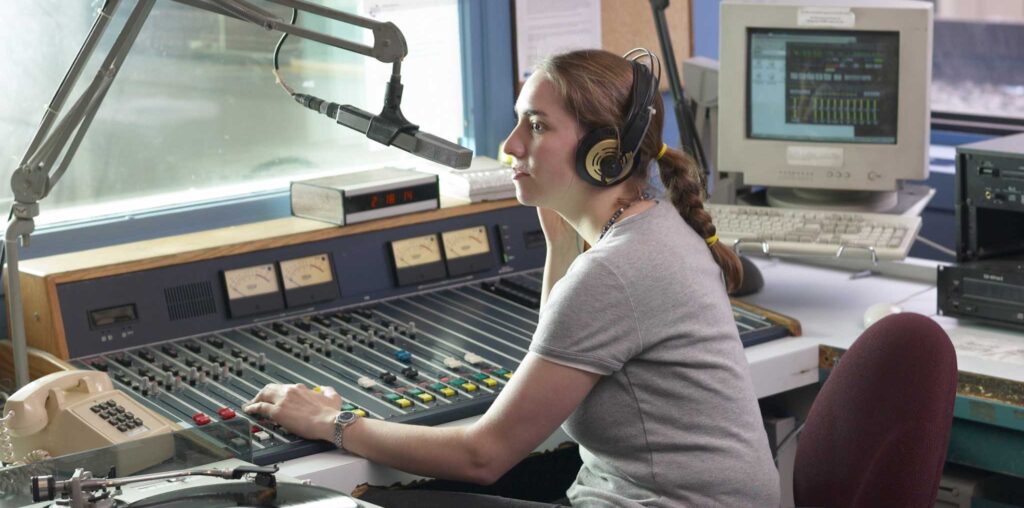Choosing the Right Radio Station Software for Your Needs
In today’s dynamic media landscape, radio broadcasting has transformed from traditional analog systems into a tech-driven, multi-platform experience. Whether you’re running a commercial FM station, a community-based online channel, or a growing podcast network, choosing the right radio station software is one of the most critical decisions you’ll make.
The right software doesn’t just power your broadcasts—it shapes your station’s workflow, audio quality, listener engagement, and even your revenue potential. With dozens of tools on the market, each offering unique features, it’s important to select a solution that aligns with your station’s size, format, goals, and technical capabilities.
In this article, we’ll guide you through how to choose the best radio station software for your needs, including essential features to look for, popular platforms to consider, and the questions you should ask before making a decision.
Why Your Software Choice Matters
The radio industry is evolving rapidly. From live FM broadcasts and mobile apps to on-demand shows and social media streaming, the ways you reach and engage your audience are more diverse than ever. Software is no longer just a utility—it’s the engine that powers every aspect of your station.
Good Radio Station Software Should Help You:
- Automate and streamline operations
- Maintain high audio quality
- Reduce manual tasks through scheduling and rotation
- Enable remote broadcasting or team collaboration
- Provide real-time listener analytics
- Integrate with streaming servers and third-party platforms
By investing in the right tools, you position your station to run more efficiently, sound more professional, and grow your audience in a scalable, measurable way.
Key Features to Look for in Radio Station Software
Choosing software isn’t just about finding the one with the most features—it’s about finding the one with the right features for your station. Here’s a breakdown of the most important capabilities to consider:
1. Automation and Playlist Scheduling
Automated playout lets your station operate smoothly 24/7, even when no one is in the studio. Scheduling tools should support:
- Playlist rotation rules
- Clock-based scheduling (hourly formats)
- Event triggers and timed announcements
- Commercial insertion and ad breaks
2. Live Assist and Remote Control
If your station includes live shows, your software must support manual control for voice intros, jingles, and real-time mixing. Look for:
- DJ carts and hotkeys
- Segue editing and crossfades
- Live voice tracking
- Remote DJ logins and cloud access
3. Streaming Server Integration
Make sure your software integrates with major streaming protocols and platforms like:
- Shoutcast
- Icecast
- RTMP streaming (for video/audio platforms)
- Podcast distribution channels (for recording and archiving)
4. Content Management and Library Organization
An efficient radio station software helps you manage audio libraries with features such as:
- Tagging, metadata editing, and categorization
- Import/export of playlists and audio formats
- Searchable music, ad, and jingle libraries
- File normalization and audio enhancement tools
5. Analytics and Reporting
Insightful reports let you make better programming and advertising decisions. Features to look for include:
- Real-time listener statistics
- Track performance reports
- Royalty report generation for licensing
- Audience heatmaps and time-based analysis
6. Scalability and Multi-User Support
As your station grows, so should your software. Ensure it supports:
- Multiple user logins with permission control
- Remote collaboration (for editors, DJs, and producers)
- Multiple station streams under one platform
- Integration with external apps or APIs
Questions to Ask Before Choosing Software
To make the best decision, ask yourself (and your team) the following:
1. What is our primary broadcasting format?
- FM/AM?
- Online streaming?
- Hybrid of both?
2. Will we need remote broadcasting?
If your team includes remote DJs, producers, or field reporters, cloud-based platforms with remote voice tracking and browser-based access are essential.
3. What’s our budget?
Some software is free with limited features, while others require a subscription or license. Consider your budget not just for the software, but also for add-ons like cloud storage, hardware compatibility, and plugins.
4. What’s our technical capability?
Do you have an IT team or are you managing everything solo? Choose software that matches your team’s expertise. Simple drag-and-drop interfaces may work best for beginners, while advanced scripting and scheduling features suit pros.
5. What integrations do we need?
Do you already use a specific audio processor, podcasting platform, or CRM tool? Check if your radio station software integrates with your existing tech stack.
Top Radio Station Software Options to Consider
Here are a few of the most popular and effective radio broadcasting software platforms available in 2024:
1. Radio.co
Best For: Online radio stations, cloud-first broadcasters
Strengths: Browser-based automation, DJ scheduling, podcast integration, remote broadcasting
2. SAM Broadcaster Pro
Best For: Professional stations (FM, online, or hybrid)
Strengths: Real-time audio processing, multiple streaming support, playlist rotation rules
3. PlayIt Live
Best For: Community and independent stations with local setup
Strengths: Voice tracking, cart walls, live assist, free-to-use with plugin expansion
4. StationPlaylist Studio
Best For: Hybrid broadcasters needing automation + live control
Strengths: Robust playlist creation, segue editing, multi-station support, royalty logging
5. Airtime Pro
Best For: Teams working remotely or podcast-driven stations
Strengths: Web-based interface, show archiving, on-demand streaming, DJ account control
Common Mistakes to Avoid
Even experienced broadcasters sometimes overlook key factors. Avoid these common pitfalls:
- Overpaying for unused features: Choose software based on need, not hype.
- Skipping the trial period: Most platforms offer demos—test before committing.
- Ignoring hardware compatibility: Make sure the software works with your current studio gear.
- Neglecting backup systems: Cloud-based platforms often offer auto backups, which are vital.
- Choosing overly complex tools: If you’re a solo broadcaster, keep it simple to stay productive.
Conclusion: Find the Right Fit for Your Station
Choosing the right radio station software is about matching your station’s goals, workflow, and budget with a solution that empowers your team and elevates your broadcast quality. From cloud-based systems like Radio.co and Airtime Pro to advanced desktop platforms like SAM Broadcaster or PlayIt Live, there’s no shortage of options to choose from.
Take your time, define your needs clearly, and don’t be afraid to test a few platforms before making a long-term investment. With the right software in place, you’ll not only improve your on-air performance but also open doors to automation, audience growth, and monetization.
Your station’s voice deserves to be heard—let the right software amplify it.




